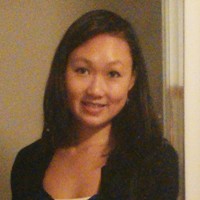Although I am a visible minority, having been born and raised in Vancouver, Canada, the issue of racial discrimination was foreign to me until I began to travel and live abroad.
Having grown up in a city rich with ethnic diversity and multiculturalism, one’s ancestral history was not of big importance.
Growing up in what I now recognize—and appreciate—as one of the most multi-cultural and ethnically diverse cities in the world, I was unaware of how powerfully, but also subtly, we judge people based on their ethnic appearance.
It was not until I began travelling and living abroad that the concept of racial discrimination was introduced to me. I use the term “racial discrimination” instead of “racism” because, personally, I have never experienced what people would typically think of as racism: name calling, being made to feel inferior, unfair treatment, or anything like that. Rather, people have difficulty accepting the fact that someone who is not visibly Caucasian can be Canadian.
As a Western foreigner, when travelling to various parts of Southeast Asia, India, and Nepal, I often get asked where I am from by the local people who are eager to interact with a foreigner. “Canada,” I always reply. “No, but where were you born,” they will inquire next. “Vancouver, Canada,” is my response. “Oh, but where were your parents born?” “Same as me. In Vancouver.”
This inquiry as to my ancestral history deemed unsatisfactory, they often end the conversation visibly dissatisfied as they did not get the response they were looking for. They are mentally trying to categorize and compartmentalize what they know in boxes, and something is not fitting properly. Sometimes they flat out refuse that someone of visible Asian appearance can also be Canadian. “No, no, but look like Asia!” they will often exclaim at me, exasperated with my unyielding responses.
The partner whom I travelled with, a blond, blue-eyed fellow Canadian, was never subject to any sort of ancestral interrogation. When he replied that he was also from Canada, his response was always immediately accepted without question. No one seemed to find it important to find out where he or his parents were born.
Throughout my travels, however, I began to notice that it was not only locals of these less-developed countries who seemed unwilling to accept (or perhaps comprehend) that someone of Asian appearance could possibly be Canadian. I occasionally received similar responses of dissatisfaction and nonacceptance of my origin/nationality from other travellers of European descent and those from first-world countries, as well.
When this first began to happen in my travels abroad, I believed that it was the concept of immigration and the ease of global mobility, so common and accessible to the privileged Westerner, that was simply incomprehensible to those living in less developed or “third world” countries. These people have grown up in the same small village that their parents had. The same village that their children would also grow up and live their entire lives in. The privilege and opportunity of having the resources to be able to travel the globe and basically makes one’s home anywhere around the world with relative ease was completely not relatable to these people. It’s a reminder of how fortunate we are to have this opportunity that I often take for granted.
Such experiences abroad made me more sensitive to the racial discrimination which was, in fact, present in my native country. Unbeknownst to me before, I suddenly began to be much more perceptive and aware of it.
At a dinner at a friend’s house, it was brought to the attention of everyone that I was vegetarian. It was not a big deal, as there were many food options at the table that did not include meat. The mom of my friend then asked me if the rest of my family ate meat. Her tone was casual, but I could tell she suspected that perhaps me being vegetarian was some sort of “cultural thing,” as I happened to be the only non-Caucasian at the table. I laughed and told her that the rest of my family indeed all ate meat.
She then asked me where my parents were born. When I replied that they were born in Vancouver, she replied, “Oh, so you’re a second-generation Canadian. You’re like, more Canadian than me.” Even to the modern Canadian, to whom the experience of immigration is so common these days, the notion that someone of a visible minority could be “more Canadian” (whatever that means) than someone who is Caucasian was slightly perplexing.
Such examples of racial discrimination are subtle—in fact, I probably wouldn’t have noticed had I not become more sensitive about it from my travels. But the judgment is there. Even in the modern, multi-cultural province of British Columbia, racial discrimination is still present.
I am fortunate that in my experience the judgment has not been malicious, or intentionally negative, however, it is still judgment.
In a time where discrimination and emphasizing differences between others could prove more harmful than ever before, attempting to fit people into categorical boxes seems unwise.
What if we were able to see people without filter or hidden biases?
What if every time we met someone, we practiced seeing them without the tinted glasses of our conditioning?
One of the ways to help us see through our filters is by recognizing what we have in common. We can learn what we share with others. What if instead of asking where someone’s parents were born, we asked what their favourite sport was or what kind of activities they like doing?
If we meet a new person travelling, we could ask them what their favourite country they’ve visited was, or what their recommendation for the best food in town would be.
We could make an effort to get to know more about the person in front of us, rather than where their ancestors were from. What makes that person standing in front of us exactly like us? What makes them smile or cry? Who is the person that can always make them laugh, or the person they couldn’t stop thinking about even if they tried? What book is currently on their bedside table? What are the scars on their knees from?
What if instead of looking for differences, we looked for ways in which we are similar, commonalities between us and things we share.
Because at the end of the day, we’re all people.
Seeing people free of our tinted glasses takes effort, but with conscious, intentional practice we can learn to see people free of any filters or boxes. We then might be able to see people for what they are.
Imagine if upon meeting people, our reaction was, “Oh look, you’re a person too! Just like me!’
Just another person.
~
~
~
Author: Michelle Amanda Jung
Image: They Live, movie still
Editor: Travis May











Read 0 comments and reply